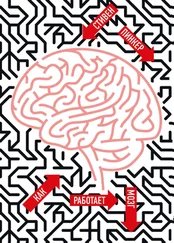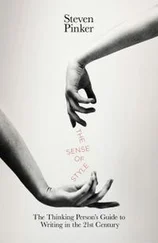Shastri, L., & Ajjanagadde, V. 1993. From simple associations to systematic reasoning: A connectionist representation of rules, variables, and dynamic bindings using temporal synchrony. Behavioral and Brain Sciences, 16, 417–494.
Shatz, A. 1999. The guilty party. Lingua Franca, B17 — B21.
Shepard, R. N. 1990. Mind sights: Original visual illusions, ambiguities, and other anomalies. New York: W. H. Freeman.
Sherif, M. 1966. Group conflict and cooperation: Their social psychology. London: Routledge & Kegan Paul.
Shipman, P. 1994. The evolution of racism. New York: Simon & Schuster. Short, P. 1999. Mao: A life. New York: Henry Holt.
Shoumatoff, A. 1985. The mountain of names: A history of the human family. New York: Simon & Schuster.
Shweder, R. A. 1990. Cultural psychology: What is it? In J. W. Stigler, R. A. Shweder, & G. H. Herdt (Eds.), Cultural psychology: Essays on comparative human development (pp. ix, 625). New York: Cambridge University Press.
Shweder, R. A. 1994. "You're not sick, you're just in love": Emotion as an interpretive system. In P. Ekman & R. J. Davidson (Eds.), The nature of emotion. New York: Oxford University Press.
Shweder, R. A., Much, N. C., Mahapatra, M., & Park, L. 1997. The "big three" of morality (autonomy, community, and divinity) and the "big three" explanations of suffering. In A. Brandt & P. Rozin (Eds.), Morality and health. New York: Routledge.
Siegal, M., Varley, R., & Want, S. C. 2001. Mind over grammar: Reasoning in aphasia and development. Trends in Cognitive Sciences, 5, 296–301.
Silverman, I., & Eals, M. 1992. Sex differences in spatial abilities: Evolutionary theory and data. In J. Barkow, L. Cosmides, & J. Tooby (Eds.), The adapted mind: Evolutionary psychology and the generation of culture. New York: Oxford University Press.
Simon, J. L. 1996. The Ultimate Resource 2. Princeton, N. J.: Princeton University Press.
Singer, I. B. 1972. Enemies, a love story. New York: Farrar, Straus & Giroux. Singer, P. 1981. The expanding circle: Ethics and sociobiology. New York: Farrar, Straus & Giroux.
Singer, P. 1999. A Darwinian left: Politics, evolution, and cooperation. New Haven: Yale University Press.
Siple, P., & Fischer, S. D. (Eds.) 1990. Theoretical issues in sign language research. Chicago: University of Chicago Press.
Skinner, B. F. 1948/1976. Walden Two. New York: Macmillan. Skinner, B. F. 1971. Beyond freedom and dignity. New York: Knopf. Skinner, B. F. 1974. About behaviorism. New York: Knopf.
Skuse, D. H., James, R. S., Bishop, D. V. M., Coppin, B., Dalton, P., Aamodt-Leeper, G., Bacarese-Hamilton, M., Cresswell, C., McGurk, R., & Jacobs, P. A. 1997. Evidence from Turner's Syndrome of an imprinted X-linked locus affecting cognitive function. Nature, 287, 705–708.
Sloman, S. A. 1996. The empirical case for two systems of reasoning. Psychological Bulletin, 119, 3–22.
Slovic, P., Fischof, B., & Lichtenstein, S. 1982. Facts versus fears: Understanding perceived risk. In D. Kahneman, P. Slovic, & A. Tversky (Eds.), Judgment under uncertainty: Heuristics and biases. New York: Cambridge University Press.
Smith, A. 1759/1976. The theory of moral sentiments. Indianapolis: Liberty Classics. Smith, A., Jussim, L., & Eccles, J. 1999. Do self-fulfilling prophesies accumulate, dissipate, or remain stable over time? Journal of Personality and Social Psychology, 77, 548–565.
Smolensky, P. 1990. Tensor product variable binding and the representation of symbolic structures in connectionist systems. Artificial Intelligence, 46, 159–216.
Smolensky, P. 1995. Reply: Constituent structure and explanation in an integrated connectionist/symbolic cognitive architecture. In C. MacDonald & G. MacDonald (Eds.), Connectionism: Debates on Psychological Explanations (Vol. Vol.2,). Cambridge, Mass.: Blackwell.
Snyderman, M., & Rothman, S. 1988. The IQ controversy: The media and public policy. New Brunswick, N. J.: Transaction.
Sommers, C. H. 1994. Who stole feminism? New York: Simon & Schuster. Sommers, C. H. 1998. Why Johnny can't tell right from wrong. American Outlook, 45–47.
Sommers, C. H. 2000. The war against boys: How misguided feminism is harming our young men. New York: Touchstone Books.
Sougné, J. 1998. Connectionism and the problem of multiple instantiation. Trends in Cognitive Sciences, 2, 183–189.
Sowell, T. 1980. Knowledge and decisions. New York: Basic Books. Sowell, T. 1985. Marxism: Philosophy and economics. New York: Quill.
Sowell, T. 1987. A conflict of visions: Ideological origins of political struggles. New York: Quill.
Sowell, T. 1994. Race and culture: A world view. New York: Basic Books.
Sowell, T. 1995a. Ethnicity and IQ. In S. Fraser (Ed.), The Bell Curve wars: Race, intelligence, and the future of America. New York: Basic Books.
Sowell, T. 1995b. The vision of the anointed: Self-congratulation as a basis for social policy. New York: Basic Books.
Sowell, T. 1996. Migrations and cultures: A world view. New York: Basic Books. Sowell, T. 1998. Conquests and cultures: An international history. New York: Basic Books.
Spann, E. K. 1989. Brotherly tomorrows: movements for a cooperative society in America, 1820–1920. New York: Columbia University Press.
Spelke, E. 1995. Initial knowledge: Six suggestions. Cognition, 50, 433–447. Spelke, E. S., Breinlinger, K., Macomber, J., & Jacobson, K. 1992. Origins of knowledge. Psychological Review, 99, 605–632.
Sperber, D. 1985. Anthropology and psychology: Towards an epidemiology of representations. Man, 20, 73–89.
Sperber, D. 1994. The modularity of thought and the epidemiology of representations. In L. Hirschfeld & S. Gelman (Eds.), Mapping the mind: Domain specificity in cognition and culture. New York: Cambridge University Press.
Spiller, R. J. 1988. S. L. A. Marshall and the ratio of fire. RUSI Journal, 133. Staddon, J. R. 1999. On responsibility in science and law. In E. Paul, F. Miller, & J. Paul (Eds.), Responsibility (Vol. 16,). New York: Cambridge University Press.
Steiner, G. 1967. Language and silence: Essays on language, literature, and the inhuman. New Haven: Yale University Press.
Steiner, G. 1984. Antigones: How the Antigone legend has endured in Western literature, art, and thought. New Haven: Yale University Press.
Steiner, W. 2001. Venus in exile: the rejection of beauty in 20th-century art. New York: Free Press.
Stevens, M. 2001a. Only causation matters: reply to Ahn et al. Cognition, 82, 71–76. Stevens, P. 2001b. Magical thinking in complementary and alternative medicine.
Skeptical Inquirer, 32–37.
Stevens, W. 1965. The necessary angel. New York: Random House.
Stevenson, L., & Haberman, D. L. 1998. Ten theories of human nature. New York: Oxford Univesity Press.
Stoolmiller. 2000. Implications of the restricted range of family environments for estimates of heritability and nonshared environment in behavior-genetic adoption studies. Psychological Bulletin, 125, 392–407.
Storey, R. 1996. Mimesis and the human animal. Evanston, IL: Northwestern University Press.
Stromswold, K. 1998. Genetics of spoken language disorders. Human Biology, 70, 297–324.
Stromswold, K. 2000. The cognitive neuroscience of language acquisition. In M. S. Gazzaniga (Ed.), The new cognitive neurosciences. Cambridge, Mass.: MIT Press.
Stryker, M. P. 1994. Precise development from imprecise rules. Science, 263, 1244–1245.
Sulloway, F. J. 1995. Birth order and evolutionary psychology: A meta-analytic overview. Psychological Inquiry, 6, 75–80.
Sulloway, F. J. 1996. Born to rebel: Family conflict and radical genius. New York: Pantheon.
Sur, M. 1988. Visual plasticity in the auditory pathway: Visual inputs induced into auditory thalamus and cortex illustrate principles of adaptive organization in sensory systems. In M. A. Arbib & S. Amari (Eds.), Dynamic interactions in neural networks (Vol. 1: Models and data,). New York: Springer-Verlag.
Читать дальше
Конец ознакомительного отрывка
Купить книгу











